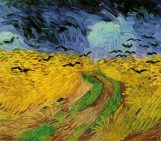Doblas-Miranda, E., Rovira, P., Brotons, L., Martínez-Vilalta, J., Retana, J., Pla, M., and Vayreda, J. 2013. Soil carbon stocks and their variability across the forests, shrublands and grasslands of peninsular Spain. Biogeosciences, 10, 8353-8361. DOI: 10.5194/bg-10-8353-2013.
Abstract
Accurate estimates of C stocks and fluxes of soil organic carbon (SOC) are needed to assess the impact of climate and land use change on soil C uptake and soil C emissions to the atmosphere. Here, we present an assessment of SOC stocks in forests, shrublands and grasslands of peninsular Spain based on field measurements in more than 900 soil profiles. SOC to a depth of 1 m was modelled as a function of vegetation cover, mean annual temperature, total annual precipitation, elevation and the interaction between temperature and elevation, while latitude and longitude were used to model the correlation structure of the errors. The resulting statistical model was used to estimate SOC in the ∼8 million pixels of the Spanish Forest Map (29.3 × 106 ha). We present what we believe is the most reliable estimation of current SOC in forests, shrublands and grasslands of peninsular Spain thus far, based on the use of spatial modelling, the high number of profiles and the validity and refinement of the data layers employed. Mean concentration of SOC was 8.7 kg m−2, ranging from 2.3 kg m−2 in dry Mediterranean areas to 20.4 kg m−2 in wetter northern locations. This value corresponds to a total stock of 2.544 Tg SOC, which is four times the amount of C estimated to be stored in the biomass of Spanish forests. Climate and vegetation cover were the main variables influencing SOC, with important ecological implications for peninsular Spanish ecosystems in the face of global change. The fact that SOC was positively related to annual precipitation and negatively related to mean annual temperature suggests that future climate change predictions of increased temperature and reduced precipitation may strongly reduce the potential of Spanish soils as C sinks. However, this may be mediated by changes in vegetation cover (e.g. by favouring the development of forests associated to higher SOC values) and exacerbated by perturbations such as fire. The estimations presented here provide a baseline to estimate future changes in soil C stocks and to assess their vulnerability to key global change drivers, and should inform future actions aimed at the conservation and management of C stocks.
Biogeosciences (BG) is an international scientific journal dedicated to the publication and discussion of research articles, short communications and review papers on all aspects of the interactions between the biological, chemical and physical processes in terrestrial or extraterrestrial life with the geosphere, hydrosphere and atmosphere. The objective of the journal is to cut across the boundaries of established sciences and achieve an interdisciplinary view of these interactions. Experimental, conceptual and modelling approaches are welcome. More at Biogeosciences homepage.


